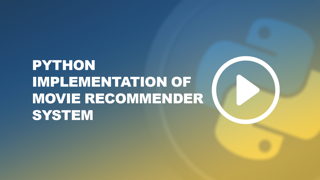Facebook Sentiment Analysis using python
Facebook Sentiment Analysis Using Python
Sentiment analysis is a powerful tool used to determine the emotional tone behind a series of words, which can be particularly valuable when analyzing social media platforms like Facebook. By applying sentiment analysis, businesses, researchers, and individuals can gain insights into public opinion, customer feedback, and overall sentiment trends on various topics. This guide explores how to perform sentiment analysis on Facebook data using Python, covering the key steps, libraries, and best practices to effectively extract and analyze sentiments.
What is Sentiment Analysis?
Sentiment analysis, also known as opinion mining, is a natural language processing (NLP) technique used to identify and categorize opinions expressed in text. It helps determine whether the sentiment is positive, negative, or neutral. In the context of social media, sentiment analysis can be used to analyze posts, comments, reviews, and other user-generated content to understand public perceptions and emotions.
Why Perform Sentiment Analysis on Facebook?
Facebook is one of the largest social media platforms, with billions of active users sharing thoughts, opinions, and feedback daily. Analyzing sentiments on Facebook can provide valuable insights for various applications:
- Brand Monitoring: Companies can track how their brand or products are perceived by the public.
- Market Research: By analyzing sentiment trends, businesses can gauge consumer preferences and adjust their strategies accordingly.
- Public Opinion: Researchers and policymakers can analyze public sentiment on social issues, political events, or any topic of interest.
- Customer Feedback: Sentiment analysis helps businesses understand customer satisfaction and areas needing improvement.
Tools and Libraries for Sentiment Analysis in Python
Python offers a range of powerful libraries and tools that facilitate sentiment analysis on social media data, including Facebook. Key libraries include:
- Tweepy: Although primarily used for Twitter, it can be adapted for similar tasks, such as collecting social media data.
- Requests and BeautifulSoup: For web scraping and extracting data from Facebook (if APIs are restricted or unavailable).
- Facebook Graph API: The official API provided by Facebook to access data from user profiles, pages, posts, comments, and more.
- TextBlob: A simple library for processing textual data, performing sentiment analysis, and classifying text as positive, negative, or neutral.
- VADER (Valence Aware Dictionary and sEntiment Reasoner): A lexicon and rule-based sentiment analysis tool specifically designed for social media text.
- NLTK (Natural Language Toolkit): A suite of libraries and programs for symbolic and statistical NLP, including tokenization, parsing, and sentiment analysis.
Steps for Facebook Sentiment Analysis Using Python
Step 1: Accessing Facebook Data
To perform sentiment analysis, you first need to collect data from Facebook. There are multiple ways to access Facebook data, including using the Facebook Graph API, which allows developers to access data related to posts, comments, and other user interactions.
Using Facebook Graph API: You’ll need to create a Facebook App and generate an access token. This token is used to authenticate requests to the API. Once authenticated, you can fetch data from specific pages, posts, or user comments.
Data Privacy and Permissions: When accessing Facebook data, it’s important to respect user privacy and adhere to Facebook’s data usage policies. Ensure you have the necessary permissions and consents to access and analyze user data.
Step 2: Preprocessing the Data
Preprocessing is a crucial step in sentiment analysis to ensure that the text data is clean and ready for analysis. Preprocessing steps typically include:
- Removing Punctuation and Special Characters: Cleans the text by removing unnecessary punctuation, symbols, and emojis that do not contribute to sentiment.
- Tokenization: Splits the text into individual words or tokens, which are easier to analyze.
- Stop Words Removal: Removes common stop words (e.g., "the," "and," "is") that do not carry significant meaning.
- Lowercasing: Converts all text to lowercase to ensure uniformity and avoid case-sensitivity issues.
- Stemming/Lemmatization: Reduces words to their root form to standardize variations of the same word.
Step 3: Applying Sentiment Analysis
With the data preprocessed, you can apply sentiment analysis using Python libraries like TextBlob or VADER:
TextBlob: TextBlob provides a simple API for diving into common NLP tasks. It can classify text as positive, negative, or neutral based on the polarity score.
VADER: VADER is specifically designed for sentiment analysis on social media text. It is sensitive to expressions, emojis, and informal language commonly found on platforms like Facebook.
Example Analysis Workflow:
- Analyze Sentiment: Use TextBlob or VADER to analyze the sentiment of each post or comment. These tools will assign a polarity score to each piece of text, indicating its sentiment.
- Classify Sentiment: Classify the sentiment as positive, negative, or neutral based on the assigned polarity score.
- Aggregate Results: Summarize the overall sentiment trends by aggregating individual sentiment scores, allowing you to identify general patterns and insights.
Step 4: Visualizing Sentiment Trends
Visualizing the results of your sentiment analysis helps in interpreting and presenting the data effectively. Use visualization libraries like Matplotlib, Seaborn, or Plotly to create charts and graphs:
- Bar Charts: Show the distribution of positive, negative, and neutral sentiments.
- Line Graphs: Track changes in sentiment over time, which is useful for monitoring public reaction to events or marketing campaigns.
- Word Clouds: Display frequently occurring words in positive or negative sentiments, providing a visual representation of common themes.
Best Practices for Facebook Sentiment Analysis
Respect Privacy and Compliance: Always adhere to data privacy regulations, including GDPR and Facebook’s terms of service, when collecting and analyzing user data.
Handle Language Variations: Facebook users often use informal language, slang, or mixed languages. Ensure your sentiment analysis tool is robust enough to handle these variations accurately.
Manage Data Limitations: API restrictions or limited data access can impact the comprehensiveness of your analysis. Work within these limitations by focusing on publicly available data or requesting necessary permissions.
Regular Updates and Monitoring: Sentiment analysis is most effective when done regularly, as public opinion and sentiments can change rapidly, especially in response to new events or information.
Applications of Facebook Sentiment Analysis
Brand Reputation Management: Monitor how customers perceive a brand or product in real-time, allowing companies to address issues promptly.
Market Insights: Gain insights into consumer preferences and opinions on various topics, helping businesses tailor their products, services, or marketing strategies.
Social and Political Research: Researchers can analyze public opinion on social or political issues, providing valuable insights into public attitudes and behaviors.
Conclusion
Sentiment analysis on Facebook data using Python offers a powerful way to understand public opinion and emotional responses on a large scale. By leveraging Python’s libraries and tools, such as TextBlob and VADER, you can efficiently process and analyze Facebook posts and comments to extract meaningful insights. Whether used for brand monitoring, market research, or social analysis, sentiment analysis provides a valuable perspective on how audiences feel and react to different topics, enabling data-driven decision-making.
For a more detailed guide and additional examples, check out the full article: https://www.geeksforgeeks.org/facebook-sentiment-analysis-using-python/.









